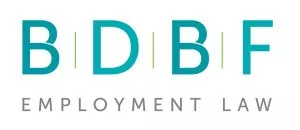On International Women's Day, Senior Associate, Clare Taylor considers where things stand with gender pay gap reporting in the wake of the Covid-19 pandemic and what steps employers can take to advance pay equality within their organisation.
One of the many things cancelled in 2020 due to the Covid-19 pandemic was the requirement for large employers to report their gender pay gap data. By suspending enforcement action for the year 2019/2020, the Equality and Human Rights Commission (EHRC) effectively told employers that they did not need to report their figures. While the reporting requirements have been re-introduced in 2021, the deadline for reporting data has been postponed to 5 October 2021.
The gender pay gap was not caused by Covid-19, but with it being widely reported that women in the workplace have been disproportionately affected by the pandemic, the danger is that the gap could widen as a result. Suspending enforcement action for a whole year, and then delaying the deadline for reporting in the following year, certainly gives the impression that this issue does not need to be a priority for employers. This is not going to help close the gender pay gap.
Further, the 2020/2021 data will, in many cases, be affected by the high number of employees who were placed on furlough leave. While furloughed employees do need to be counted when determining whether an employer meets the 250-employee threshold for reporting, furloughed employees should be excluded from the calculation if their salary wasn't topped up to full pay by the employer. This is because the gender pay gap and salary quartile bands are calculated based on the full pay of relevant employees. Accordingly, the 2020/2021 data may not accurately reveal the true gender pay gap.
One of the barriers to closing the gender pay gap is the lack of information on pay. In many instances, women do not know that they are being paid less than their male counterparts. This makes it difficult for women to challenge inequality on an individual level. Lockdown has also had the effect of isolating the workforce, meaning that women are less able to band together and mount a group challenge. Replicating the challenge to pay practices made by the Dagenham Ford factory workers in 1968 seems impossible in this climate.
This point has not gone unnoticed and the Labour MP Stella Creasy has introduced a private members bill, the Equal Pay (Information and Claims) Bill. The Bill "seeks to break the culture of discrimination and the culture of secrecy that causes it" by giving employees, amongst other things, the right to request pay data of a comparator. Whilst it is relatively uncommon for private members bills to become law, this one has been drafted by a panel of legal and human resources experts and has cross party support. The debate for the second reading has yet to be announced, but the hope of those who support it is that it will lead to the pay transparency that is needed if the UK's gender pay gap is finally to be closed for good.
In the meantime, there are three key steps that employers can take to accelerate closure of the gender pay gap:
- First, demonstrate that closing the gender pay gap remains a priority by meeting the original April deadline to report the data. This sends a very clear message that despite the other challenges facing the organisation, this remains an important issue.
- Second, when reporting data, voluntarily include data relating to employees who have been furloughed. This will give a true picture of the employer's gender pay gap and will enable genuine year-on-year comparisons to be carried out. If this is not done, organisations will report two years of incomplete and/or inaccurate data, which will hinder one of the key benefits of annual reporting, namely, to see where progress is being made and where more work needs to be done.
- Third, analyse the effectiveness of the measures already in place to reduce the gender pay gap, and consider whether they should be continued, adapted or replaced. This is incredibly important as there is no "one size fits all" strategy. As an organisation changes, so too should its equality and diversity strategy. Given how lack of transparency helps perpetuate a gender pay gap, an employer could take immediate action to make their pay policies more transparent. In summer 2021 almost every employer in the UK will need to re-evaluate its working practices as the country comes out of lockdown, so this is the prime time to assess how they can work to close the gender pay gap.
The content of this article is intended to provide a general guide to the subject matter. Specialist advice should be sought about your specific circumstances.

